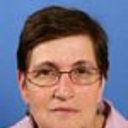A nonsense mutation in the human homolog of Drosophila rogdi causes Kohlschutter-Tonz syndrome.
الكلمات الدالة
نبذة مختصرة
Kohlschutter-Tonz syndrome (KTS) is a rare autosomal-recessive disorder of childhood onset, and it is characterized by global developmental delay, spasticity, epilepsy, and amelogenesis imperfecta. In 12 KTS-affected individuals from a Druze village in northern Israel, homozygosity mapping localized the gene linked to the disease to a 586,513 bp region (with a LOD score of 6.4) in chromosomal region 16p13.3. Sequencing of genes (from genomic DNA of an affected individual) in the linked region revealed chr16: 4,848,632 G>A, which corresponds to ROGDI c.469C>T (p.Arg157(∗)). The nonsense mutation was homozygous in all affected individuals, heterozygous in 10 of 100 unaffected individuals from the same Druze community, and absent from Druze controls from elsewhere. Wild-type ROGDI localizes to the nuclear envelope; ROGDI was not detectable in cells of affected individuals. All affected individuals suffered seizures, were unable to speak, and had amelogenesis imperfecta. However, age of onset and the severity of mental and motor handicaps and that of convulsions varied among affected individuals homozygous for the same nonsense allele.


